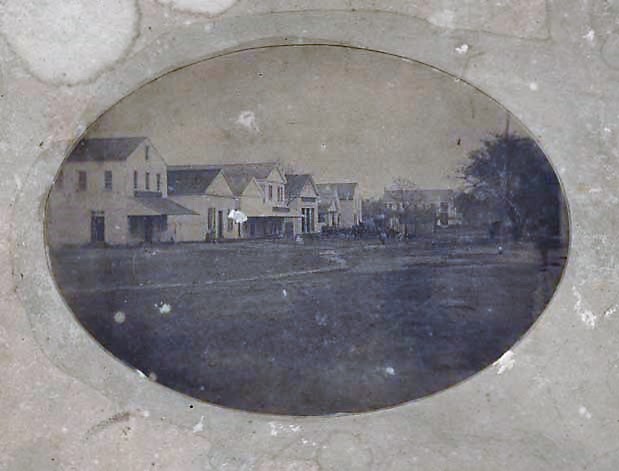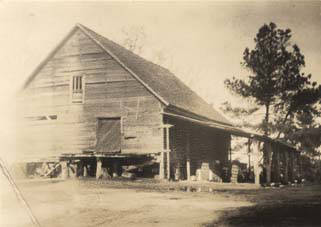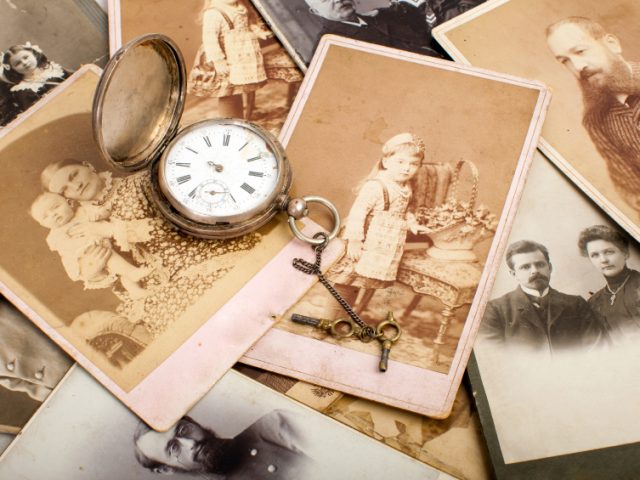During the 1930s, Great Depression era, many writers were employed to interview people around the United States, so their experiences and life history could be recorded The program was named the U.S. Work Projects Administration, Federal Writers’ Project and it gave employment for historians, teachers, writers, librarians, and other white-collar workers. This is one of the stories from Monroe County, Alabama by WPA worker Ida Henderson.
“Mammy” Harriett Abney
by
Ida Henderson
Works Progress Administration (WPA)
Perdue Hill, Alabama
Monroe County
ca. 1939
The war between the states, and the causes that led up to it, have been properly recorded by historians and voluble exploited by orators. These subjects have afforded politicians campaign thunder in their play upon partisan and prejudiced voters both in the North and in the South. This war, like most other wars, produced a large number of heroes – men who offered their lives for what they believed to be right, and the memories of these have been kept alive by historical records, by song and by story.
And, this war, fought to end slavery, in the light of some speeches made in the North, and stories like “Uncle Tom’s Cabin”, had the unique distinction of having refuted much of the false pre-war propaganda to the effect that the Southern slave owner was a beastial tyrant who cruelly mistreated his negro property.
 Street in Claiborne, Monroe County, Alabama during the 1850s (Alabama Department of Archives and History)
Street in Claiborne, Monroe County, Alabama during the 1850s (Alabama Department of Archives and History)
At the beginning of the war, when the South’s young men left their homes to join the army, there were many slaves who went along with their “young marsters”, and in leaving the homes of their “white folks”, solemnly promised to take good care of “young marsa” – and this they did in so far as it was humanly possible. They shared their hardships and dangers, foraged for food, and in many instances searched battle fields for their missing masters, sometimes bringing them back wounded, and oftentimes dead. If wounded, these negroes gave loving and unselfish care; if dead, they gave as nearly a Christian burial as they could, and with “young marsa’s” belongings began a sorrowful journey back home to report to “Ole Marsa” and ”Ole Miss” of a duty well-performed.
But not much has been written or told of the loyalty and love displayed by the slave women during and after the war. And, so, this story concerns a negro woman — one of the most remarkable characters of her race, and an outstanding example of the splendid amicable relations that existed between slave owners and their human chattels.
Mr. Orlando Abney was a resident of Fort Claiborne in its heyday, his home, a one and one-half story building, with well-cared for grounds shaded by large water oaks, and further beautified with myrtle and native yewpon, was located on Abney avenue, one-half mile off Main street. Abney avenue ran westward from Main street, and at right angles to that thoroughfare. Mr. Abney was a slave owner, and a prominent man in the civic and social life not only of Claiborne, but of the entire county.
 The photo above is of the Lower Warehouse” in Claiborne, Alabama, This is not the original building as the warehouse burned several times. On the other side of the building, 365 steps lead down to the boat landing on the river. Ida Henderson’s name (the author) is on the back of photo, but her connection is unclear (Alabama State Archives)
The photo above is of the Lower Warehouse” in Claiborne, Alabama, This is not the original building as the warehouse burned several times. On the other side of the building, 365 steps lead down to the boat landing on the river. Ida Henderson’s name (the author) is on the back of photo, but her connection is unclear (Alabama State Archives)
Known as Mammy Harriett
One of his slaves was Harriett Abney, known to everybody in these parts as “Mammy Harriett”, and more often of or addresses simply as “Mammy.” And it is with her that this sketch is concerned:
“Mammy” was a young woman at this period, probably about eighteen years of age. She had been reared in an atmosphere of culture and refinement, having been trained for house work. Following the war, “Mammy” and Bill, another of Mr. Abney’s slaves, and an old man and kinsman of Harriett, remained loyal to the Abney family, and continued an uninterrupted service.
When “Marsa Lander”, as he was called by his negroes, died, the world seemed suddenly to have come to an end for “Mammy” as “Ole Miss” was leaving to live with her kinspeople in Louisiana. At the time of her departure, Mrs. Abney presented to this faithful servant girl deeds to the Abney home and farm land, together with the home furnishings. Harriett rented her home to white friends whom she considered “quality”, and continued to occupy the servant’s quarters, working as maid and laundress, to her renters.
Continued her activities
Years passed, and the writer recalls “Mammy” as a rather oldish woman, who nevertheless continued her activities. There was never a wedding, birth, funeral, picnic, dance or any public occasion at which “Mammy” was not present as a general utility unit, as maid, cook, nurse, or to receive the guests. She never obtruded herself where her presence was not needed. On occasion, she could make a perfect fade away, her intuition giving her the que to the right moment to exit.
As the years went by her small figure became bent innate dignity as she went about attired in her best black dress and a large white apron of sufficient yardage to make a frock of present-day styles. For head dress she wore black and white bandanna.
Called white folk friends, my children
Mammy Harriett was really a most unusual character! She called the children of her “quality” white folk friends “my children”, all of whom she sincerely loved, and to whom she afforded much joy. She was considerate of those less fortunate than “her children”, and polite to the members of her own race, but in the grand manner of her yester-years.
To come within “Mammy’s” charmed or inner circle, and enjoy all the magic of her presence, one had to measure up to her own standard of “quality” for white folk.
Chaperone at all the dances
She was without an education in the sense of having acquired knowledge from books attending school, but through the associations, she was privileged to have in the home of her owners in her early years, she had acquired refinement and poise, her natural intelligence enabling her to absorb much valuable information through these contacts.
The young men of the town and countryside made certain that “Mammy” was available as chaperone before planning a dance or picnic. At the dances, she took care of the wraps, coats and hats, and it is hard to conceive that a more correct chaperone was ever produced before or since her time. It was from the promptings of a heart of love and deepest loyalty that she chaperoned her charges so magnificently and always had them ready to go home at midnight.
ALABAMA FOOTPRINTS Pioneers: Lost & Forgotten Stories includes the following stories
- The Yazoo land fraud
- Daily life as an Alabama pioneer
- The capture and arrest of Vice-president Aaron Burr
- The early life of William Barrett Travis, hero of the Alamo
- Description of Native Americans of early Alabama including the visit by Tecumseh
- Treaties and building the first roads in Alabama.




What a heart warming story. What a different world this would be if more of us were more humble and less self serving as Mammy was…..
Yes Peggy, we all could take away some valuable lessons on life and living from this article.
I don’t know if it is possible to give enough credit to Donna Causey for all of the heart warming, fun, and thought provoking articles she provides.
Thank you Hardy! I love finding these gems and sharing them with you. They are like little treasures.
This Story of Harriett is so enjoyable, as I was a young white kid who benefited from The Love of a Black Lady, who was actually like a Grandmother to me and my
brother.
She was born in South Pittsburgh ,Tennessee to a mother who was a Slave, and became (with Child)by her Master, who was a Land Owner, and no doubt had no Principals of doing such with a Lady under his Domain..
Our person of interest was Light Skin, whom was named Martha Beeks, but she was knows by us all as “GRANNY”…She was a Strong Church Lady, known by her fellow Church Members as “MISS MARTHA” !! Sunday was her DAY, all decked out in her best attire, and was sorter “IN CHARGE OF THE CHURCH”, and, I, believe you can follow my drift !!
There is so much more to be told about her life, but this is not the time to relay same, as it will take up a lot of time & space. Perhaps we can do such later, and talk about Life in ATTALLA, Alabama in the late 1930’s thru the WW11 years, plus 1950’s..
Being a Civil War “nut”, I read old stories such as this quite a bit. Thank you once again, Donna, for sharing all kinds and varieties of articles about our Southern history.